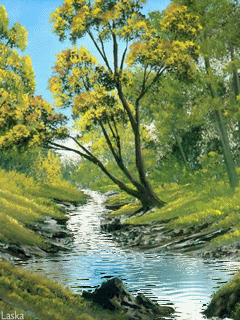History
Mongolia’s history spans 5.000
years. From nomads helding the Central Asian steppe to the formation of the
powerful Mongol Empire and the gradual emergence of the Mongolian Republic, its
history is steeped in conflict. 
The first Mongolian state was
established in 209 BC by Huns or Hunnu people. The name Hunnu comes from two
ancient Mongolian words. "Hun” means "man” and "nu” translates as "sun”. The
Hun’s first king was Modun Shan Yui, whose father Tumen was chieftain of Hun’s
most influential tribe.
The Huns territory stretched from Korea in the Far East to Tian Shan Mountian
in the northern China and from the southern section of the Great Wall to Lake
Baikal in southern Siberia. From 200 BC until its collapse in 98 AD, the Hun state
was the most powerful nomadic nation residing in the sprawling Central Asian
steppe and mountain., But, after three hundred years of domination the Hun
state imploded, ruined by internal conflicts between powerful chieftains.
After the Hun state collapsed several other ambitions clans established their
own states and dominated Mongolian territory up until 1200 AD. The first
domination state after the Hun’s collapse was the Sumbe State, which lasted
until the 3rd century BC. The Toba finally took over the Sumbe state inn 250 AD
and established its own state with a number of tribal allies. In turn the Tobas
were defeated by the Nirun, who were forced to hand the state over to Turkic
tribes who established the Tuger Kingdom On Mongolia in 552 AD. Thousand of
Turkic people has arrived from the far west via the Altai Mountains during the
4th century AD. They extended the ancient feudal system, but were also defeated
by their own internal conflicts in 745 AD.
The Uigar tribe then became the most powerful in Central Asia, but were unable
to dominate the whole of Mongolia. It was the Kidans, who had peacefully
coexisted with several previous ruling tribes, who took over Mongolia in 907.
Their dominance lasted until the 12th century when a number of Central Asian
tribes invaded at the same tiem. There was now no ruler in Mongolia and this
vast territory was divided and subdivided into tribal areas.
Temujin was born into the Esugui in
1162 and is best known as Chinggis (Genghis) Khan. His father was a chieftain
of one of the numerous tribes ansd was killed by the Tatars when Temujin was
just 9 years old.
With the support of his father’s friends, Temujin established the Great Mongo
State in 1189. By 1206 he had united 81 different Mongolian tribes and
established the Great Mongolian Empire in 1206, when he was crowned as Chinggis
Khan. 2006 is the year of 800th anniversary of the establishment of Mongol
Empire. Chinggis Khan died in 1227. Subsequent Mongolian Khans were chosen from
following generations of Chinggis Khan’s children.
During the 13-14th centuries, Mongolia developed in terms of its economy,
culture, military strength and politics. It was a huge, sprawling empire which
encompassed many separate Asian and Europian nations. Still known as the Golden
Era of Mongolian history, during this time the Mongol Empire was the most
powerful nation on earth. Chinggis Khan was a great military general, statesman
and Mongolian national hero.
The Mongol Empire began to fall apart in 1368. This was bound up with the
collapse of the Mongolian Yuan Dynasty, which had been established in China
after Kublai Khan named Beijing the new Capital of the Mongol Empire.
The Manchurians conquered Mongolia in 1691 and the Manchuriancolonization
lasted for 220 years. By the beginning of 20th century Mongolians were
embroiled in a straggle for national liberation, which finally came to fruition
in December 1911, when the Manchurians withdrew and Mongolia’s independence was
proclaimed in Urguu (as Ulaanbaatar was previously known), Mongolia’s
theocratic ruler Bogd Khan was awarded power across the entire country.
Socialist and Democratic Mongolia
 On 11 July 1921, the socialist
revolution, known as People’s Revolution took place. In 1924, the Mongolian
People’s Party proclaimed Mongolia a People’s Republic’s first constitution. As
Mongolia maintained strong links with the former Soviet Union, the socialist
era continued until 1990, when democratic changes first started in Mongolia.
On 11 July 1921, the socialist
revolution, known as People’s Revolution took place. In 1924, the Mongolian
People’s Party proclaimed Mongolia a People’s Republic’s first constitution. As
Mongolia maintained strong links with the former Soviet Union, the socialist
era continued until 1990, when democratic changes first started in Mongolia.
The country’s first multi-party election was held in June 1990. The new
parliament adopted Mongolia’s first democratic parliamentary republic operating
with a President. Both parliament and president have to be directly elected by
the general public. Throughout these political changes, Mongolia has slowly
been paying its way towards a free market economy ans way from the old economic
system.
STELLATOUR LLC
13th khoroo,Songinokhairkhan district,
Ulaanbaatar, MONGOLIA
TEL: (976) + 55156773, (976)+98225662
Email: stella_tour@hotmail.com
All material ©copyright
2010








